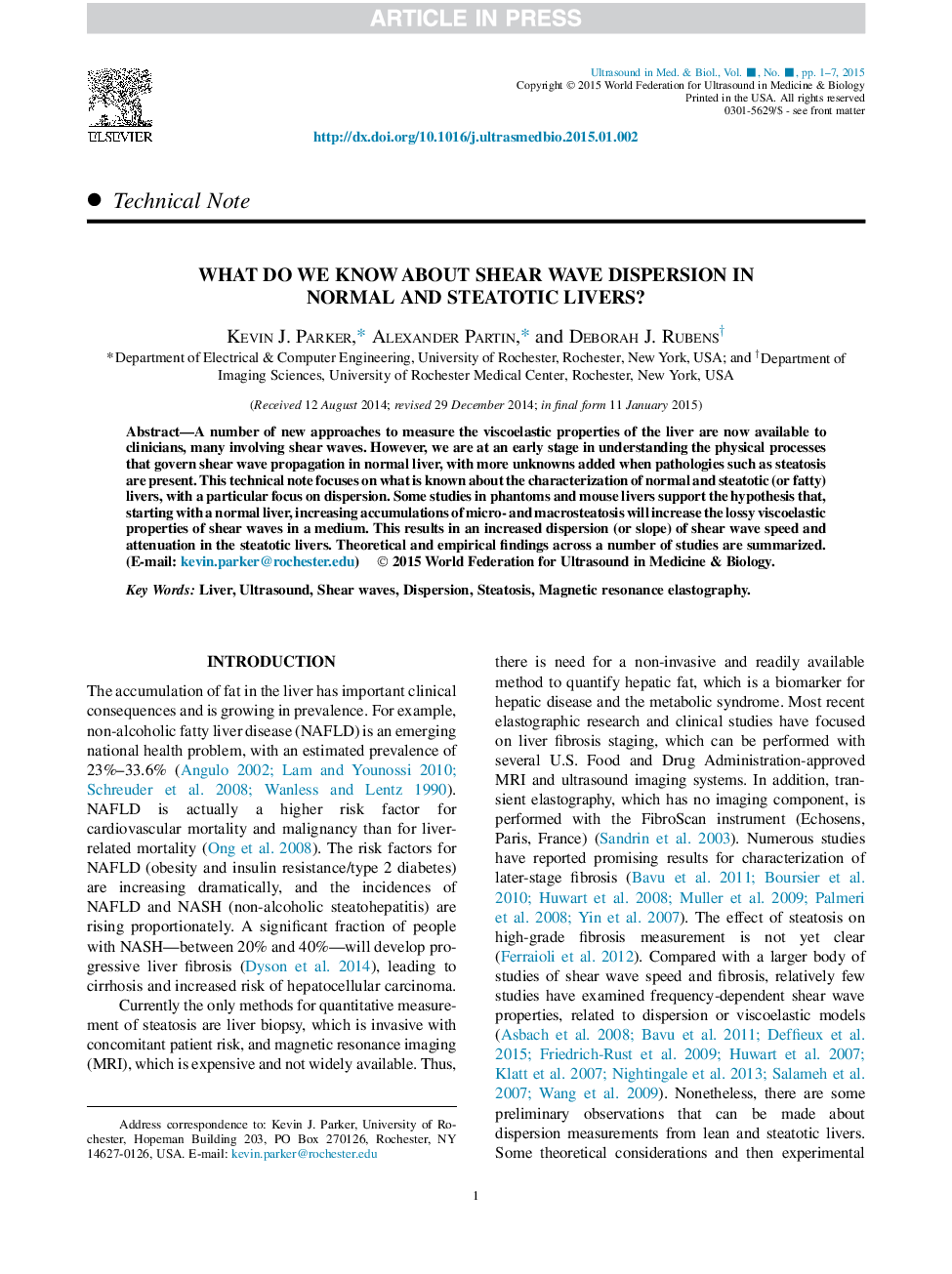| Article ID | Journal | Published Year | Pages | File Type |
|---|---|---|---|---|
| 10691462 | Ultrasound in Medicine & Biology | 2015 | 7 Pages |
Abstract
A number of new approaches to measure the viscoelastic properties of the liver are now available to clinicians, many involving shear waves. However, we are at an early stage in understanding the physical processes that govern shear wave propagation in normal liver, with more unknowns added when pathologies such as steatosis are present. This technical note focuses on what is known about the characterization of normal and steatotic (or fatty) livers, with a particular focus on dispersion. Some studies in phantoms and mouse livers support the hypothesis that, starting with a normal liver, increasing accumulations of micro- and macrosteatosis will increase the lossy viscoelastic properties of shear waves in a medium. This results in an increased dispersion (or slope) of shear wave speed and attenuation in the steatotic livers. Theoretical and empirical findings across a number of studies are summarized.
Related Topics
Physical Sciences and Engineering
Physics and Astronomy
Acoustics and Ultrasonics
Authors
Kevin J. Parker, Alexander Partin, Deborah J. Rubens,
